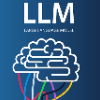The spread of scientific knowledge depends on how researchers discover and cite previous work. The adoption of large language models (LLMs) in the scientific research process introduces a new layer to these citation practices. However, it remains unclear to what extent LLMs align with human citation practices, how they perform across domains, and may influence citation dynamics. Here, we show that LLMs systematically reinforce the Matthew effect in citations by consistently favoring highly cited papers when generating references. This pattern persists across scientific domains despite significant field-specific variations in existence rates, which refer to the proportion of generated references that match existing records in external bibliometric databases. Analyzing 274,951 references generated by GPT-4o for 10,000 papers, we find that LLM recommendations diverge from traditional citation patterns by preferring more recent references with shorter titles and fewer authors. Emphasizing their content-level relevance, the generated references are semantically aligned with the content of each paper at levels comparable to the ground truth references and display similar network effects while reducing author self-citations. These findings illustrate how LLMs may reshape citation practices and influence the trajectory of scientific discovery by reflecting and amplifying established trends. As LLMs become more integrated into the scientific research process, it is important to understand their role in shaping how scientific communities discover and build upon prior work.
翻译:暂无翻译





























